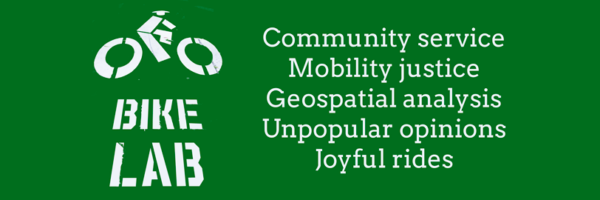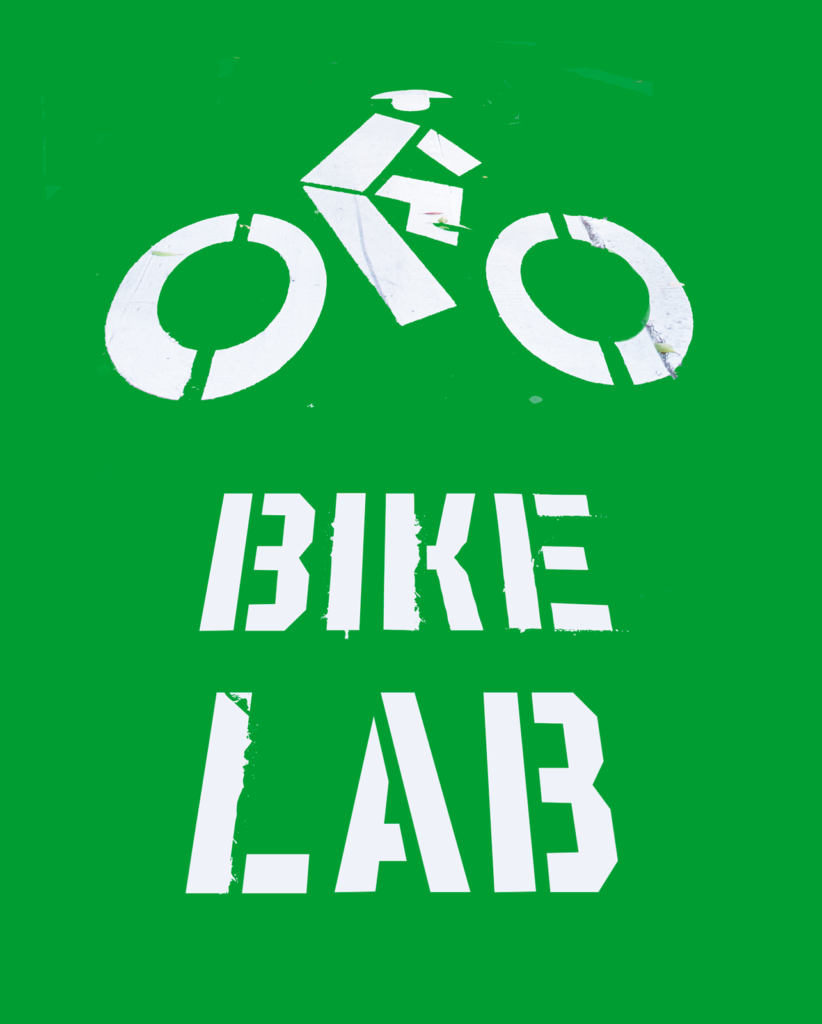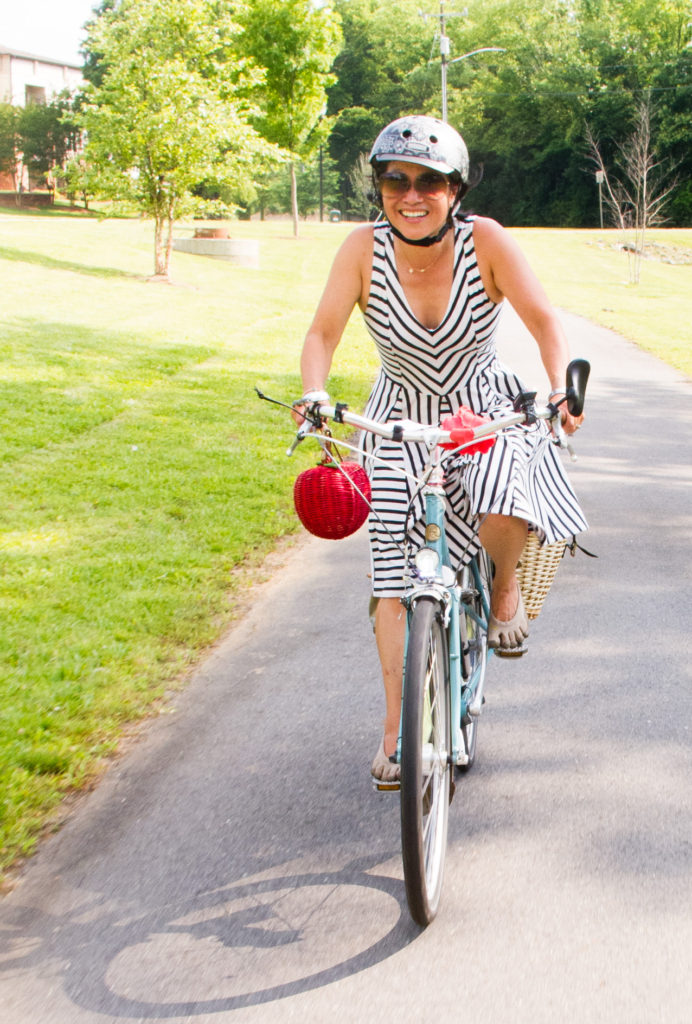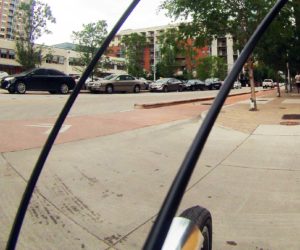
We picked up rental bikes at Austin Bike Tours, a local operation run by folks who are pretty well integrated with the bike culture in town. The operation is run out of a shipping container in the hotel district, on a street with one of Austin’s first protected bike lanes. The rides are city bikes from Fairdale, a local manufacturer with a flair for utility bikes. These are much different than the typical tourist rental bikes, cooler and more fun to ride, and also more practical; the fenders would later prove useful during a couple of summer thunderstorms. We had some good conversations with the staff about biking in Austin, and headed off to check out the streets for ourselves.
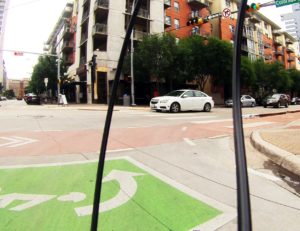
My personal opinion on this protected bike lane: meh. The traffic on this road was likely low-speed even before the installation, so it was probably fine as a natural bikeway. The paint and curb make the space feel safer, and that might be appropriate for a tourist-oriented space, but for me as a confident cyclist it’s not providing much value. And there’s a cost; because you’re separated from traffic by a curb, you can’t make a normal left turn out of the lane. To deal with that problem, they’ve set up left turn bike boxes in front of the cross-street traffic, which at least gives you a way to make the turn without going on the sidewalk. But it’s not a great trade-off at the high-volume cross streets. We were heading out towards Barton Springs, a popular tourist spot, which meant we needed to cross the Congress Street bridge. Without the protected bikeway, I would have made a left turn on a green light from a low-traffic street, and been well established on the road before I had to deal with significant traffic. The pedestrianized turn takes an extra light cycle, and requires me to start from zero, with a line of cars behind me on a two-lane, one-way street with parking and no bike lane.
Good design is contextual. In my opinion, a protected bikeway makes sense on a high-traffic street with few intersections or predominantly low-traffic cross streets. When those factors are flipped around, and the facility is on a low-traffic street with high-traffic cross streets, it can cause more problems than it solves. (My opinion).
